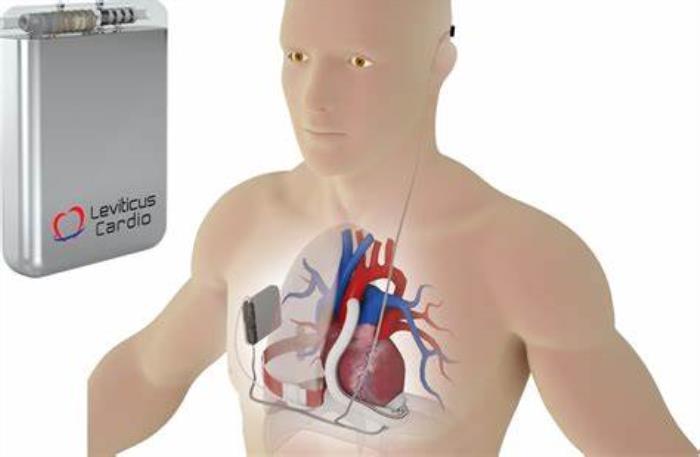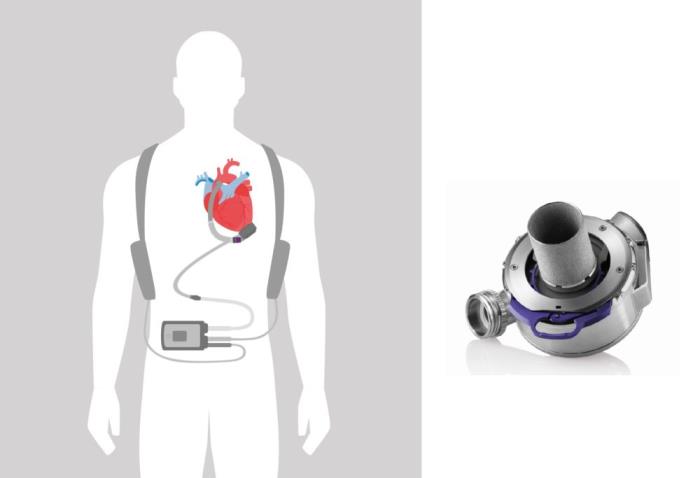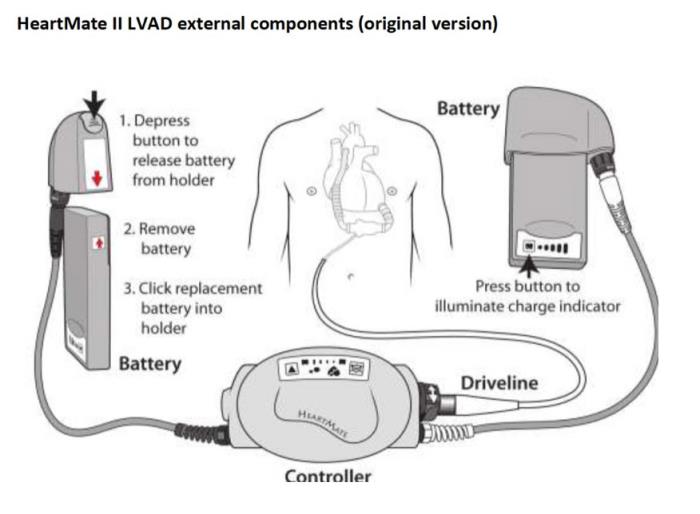Proper battery management is vital for patients with a Left Ventricular Assist Device (LVAD) to ensure continuous heart support and avoid dangerous interruptions in blood flow. Since the LVAD relies on an external power source, understanding how to manage and maintain the device’s batteries is crucial for patient safety. Effective battery management helps prevent unexpected power loss, enhances the device’s performance, and allows patients to lead more independent and confident lives.
How Long Does a Left Ventricular Assist Device (LVAD) Battery Last?
The battery life of an LVAD typically ranges from 8 to 12 hours, depending on the specific model and the patient’s activity level. Patients usually carry two fully charged batteries at all times to power the device. Once a battery depletes, it can be swapped for a charged one, ensuring the LVAD continues functioning without disruption. It is essential to monitor battery levels closely and plan ahead for timely recharging to maintain constant power to the LVAD.
Types of LVAD Batteries: Understanding Your Power Source
LVADs are powered by rechargeable lithium-ion batteries, which are known for their durability and long-lasting energy supply. These batteries are designed to provide consistent power output while being lightweight and easy to carry. Some LVAD systems also have an external power unit for home use, allowing the patient to plug in the device for continuous operation while at rest. Understanding the different battery options available and how they work is important for maintaining flexibility and security in daily life.

How the LVAD Battery System Works
The LVAD battery system consists of two external batteries connected to the device via a driveline that passes through the skin. These batteries are attached to a controller, which monitors power levels and ensures that the pump inside the body receives uninterrupted energy. The controller also provides real-time feedback on the battery status, alerting the patient when the batteries need to be replaced or recharged. This system ensures that the LVAD operates smoothly throughout the day, regardless of the patient’s activity.
Daily Battery Maintenance: Best Practices for LVAD Patients
To ensure reliable LVAD function, patients should adopt daily battery maintenance practices. This includes charging spare batteries overnight so that they are ready for use the next day. It’s also essential to clean the battery connectors regularly to ensure a strong connection and avoid power disruptions. Patients should carry extra batteries and chargers whenever they leave home to stay prepared for any situation. Following the manufacturer’s guidelines on battery care will extend their life and maintain the LVAD’s optimal performance.
Recognizing Low Battery Alerts: When to Charge or Change Batteries
LVAD systems are equipped with visual and audible alarms to notify patients when the battery is running low. A low battery alert typically signals that the power level has dropped to a critical threshold, and immediate action is needed. When these alarms occur, patients should replace the depleted battery with a fully charged one or plug into an external power source. It is important to respond quickly to these alerts to avoid power loss, as the LVAD’s continuous function is essential for maintaining stable heart function.

How to Safely Charge Your LVAD Batteries
To safely charge your LVAD batteries, always use the designated charging system provided by the manufacturer. Ensure the charger is plugged into a stable power source and follow the instructions to correctly attach the batteries. Avoid overcharging, and never use damaged or faulty charging equipment.
Carrying Backup Batteries: Staying Prepared at All Times
Always carry at least two fully charged backup batteries wherever you go. This ensures that you have sufficient power in case your primary batteries run low or malfunction. It’s important to store them in a secure, easily accessible location for quick replacement.
Traveling with LVAD Batteries: Essential Tips for Patients
When traveling with LVAD batteries, pack extra batteries and your charger in your carry-on luggage. Be sure to inform airport security and carry a letter from your doctor explaining your device. Check the airline’s policies on medical devices and make sure all batteries are charged before your trip.
Troubleshooting Common Battery Issues
If your LVAD battery is not charging or holding a charge, first check the connections and ensure it’s properly inserted into the charger. Inspect for any visible damage or wear. If the issue persists, switch to a backup battery and contact your healthcare provider or LVAD support team for further assistance.

The Role of Caregivers in Assisting with Battery Management
Caregivers can help monitor the patient’s LVAD battery status, remind them to charge their batteries regularly, and assist with battery changes. They should also be trained in troubleshooting battery issues and know how to manage the device during emergencies.
What to Do During a Power Outage or Emergency
During a power outage, immediately switch to battery power if not already in use. Ensure you have fully charged backup batteries available and consider having a portable generator for longer outages. Inform your LVAD team if you anticipate power issues or need further assistance.
How Long Do LVAD Batteries Last Without Recharging?
Most LVAD batteries last between 8-12 hours on a full charge, depending on the model and the patient’s activity level. It’s important to monitor battery levels regularly and plan ahead to charge them before they run out of power.
Proper Storage of LVAD Batteries: Avoiding Damage
Store LVAD batteries in a cool, dry place away from direct sunlight and extreme temperatures. Ensure that they are not exposed to water or moisture, and avoid dropping them to prevent damage. Always store backup batteries fully charged and ready for use.
How to Extend the Life of Your LVAD Battery
To extend the life of your LVAD battery, avoid overcharging or letting the battery completely drain before recharging. Regularly switch between batteries to ensure even usage and avoid exposure to extreme temperatures, which can degrade battery performance.
Understanding LVAD Battery Warranty and Replacement
LVAD batteries typically come with a manufacturer’s warranty, which covers defects and performance issues. It’s essential to understand the terms of your warranty and to replace batteries as recommended by the manufacturer. Keep track of battery age and performance to avoid unexpected failures.
Monitoring Battery Performance: Key Indicators of Wear and Tear
Signs of wear and tear include reduced battery life, difficulty charging, or the battery becoming unusually warm during use. If you notice any of these indicators, contact your LVAD team for guidance on whether the battery needs replacement.
The Importance of Routine Follow-Ups for LVAD Battery Checkups
Regular follow-up appointments with your LVAD team are crucial for ensuring the optimal performance of your batteries. During these visits, your team will check for any issues with the device, battery life, and overall functionality, helping to prevent any potential problems.
Emergency Scenarios: What to Do If Your LVAD Battery Fails
If your LVAD battery fails unexpectedly, immediately switch to a backup battery. If you experience difficulties restarting the device or if both batteries fail, seek emergency medical attention or call your LVAD support team for guidance.
Life Expectancy with a Left Ventricular Assist Device and How Long You Can Live
Explore the potential life expectancy associated with using a Left Ventricular Assist Device (LVAD). This section discusses various factors influencing longevity, including the underlying heart condition, patient health, and advancements in device technology, helping you understand what to expect with LVAD therapy.
Left Ventricular Assist Device Surgery for Patients with Congenital Heart Defects
Learn about the role of LVAD surgery in managing congenital heart defects. This section examines how LVADs can be a vital treatment option for patients with congenital conditions, improving heart function and quality of life while discussing the surgical process and recovery considerations.
Conclusion: Managing LVAD Battery Life for Peace of Mind
Proper LVAD battery management is essential for the device's reliable function. By following best practices for charging, storing, and monitoring your batteries, you can extend their life and avoid emergencies. Regular checkups and staying prepared with backup power options will give you peace of mind.
Best LVAD Surgery in India
The Best LVAD Surgery in India offers life-saving support for patients with advanced heart failure, using an implanted device to assist the heart in pumping blood effectively.
Best LVAD Surgeons in India
The Best LVAD Surgeons in India are experienced in performing this complex procedure, ensuring personalized care and optimal outcomes for patients with severe heart conditions.
FAQ:
How long does an LVAD battery last before needing to be charged?
LVAD batteries typically last between 8-12 hours on a full charge, depending on usage and device model.
What should I do if my LVAD battery fails?
Immediately switch to a fully charged backup battery and contact your healthcare provider if the issue persists.
How many backup batteries should I carry with my LVAD?
It’s recommended to carry at least two fully charged backup batteries at all times.
How can I extend the life of my LVAD battery?
Avoid overcharging, regularly alternate batteries, and keep them in a cool, dry place to extend battery life.
What precautions should I take when traveling with an LVAD?
Carry extra batteries, keep them in your carry-on luggage, inform airport security, and carry a doctor’s note explaining your device.